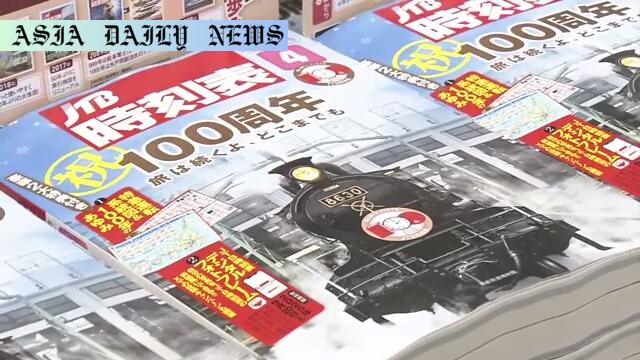Railway Timetable – The 100th anniversary edition of JTB Timetables, Japan’s iconic railway guidebook, is now available.
- Railway Timetable guidebook marks its 100th anniversary edition release.
- JTB Timetables played a pivotal role in shaping Japanese railway travel.
- Despite digital trends, 60,000 paper copies continue to sell monthly.

The Legacy of the JTB Timetables
The release of the 100th anniversary edition of JTB Timetables is a remarkable milestone in Japanese railway history. The guidebook, which first debuted in 1925, transformed how train schedules were communicated to the public. Its introduction of Arabic numerals arranged horizontally was a groundbreaking change from the traditional Chinese numerals written vertically. Over its century-long journey, the publication became an essential travel companion for Japanese citizens, railway enthusiasts, and businesses alike.
During its golden era, particularly after World War Two, the JTB Timetables soared in popularity, with sales reaching an astonishing 2 million copies per month in 1986. The publication wasn’t merely a timetable; it was a cultural phenomenon. It provided clarity, precision, and a sense of reliability in an era where public transport was the backbone of daily life.
The Decline and Digital Transition
As with many print publications, the JTB Timetables faced challenges with the advent of digital technologies. The rise of websites and mobile applications offering real-time train schedules significantly reduced the demand for paper-based timetables. Today, many commuters rely on their smartphones for quick and accurate train information, sidelining traditional printed guides. Nevertheless, the JTB Timetables retains a niche following, printing approximately 60,000 copies during spring, when train schedule updates peak.
This enduring demand reflects the unique charm of tangible guidebooks. Many users appreciate the tactile experience, meticulous details, and historical value these guides offer. For collectors and railway enthusiasts, the JTB Timetables are not just reference materials but treasured pieces of Japanese travel heritage.
The Future of Railway Guidebooks
The chief editor of JTB Timetables, Kajiwara Mirei, has expressed a commitment to keeping the guidebook alive through both print and digital mediums. Recognizing the changing landscape of consumer preferences, the team behind the publication is exploring innovative ways to adapt. A potential digital version could bring the guidebook to a younger, tech-savvy audience while preserving its legacy for future generations.
The 100th anniversary edition is a testament to the resilience and cultural significance of the JTB Timetables. While the number of monthly prints has declined drastically, the publication continues to inspire nostalgia and admiration among its readers. Its longevity demonstrates that even in a digital age, traditional mediums can maintain their relevance and allure.
Ultimately, the JTB Timetables serves as a reminder of how railway travel has evolved over the last century. From its role in modernizing train schedules in 1925 to its status as an enduring cultural icon, it remains a cornerstone of Japan’s transportation history.



Commentary
Preserving the Cultural Significance of Railway Timetables
The release of the 100th anniversary edition of the JTB Timetables feels like a celebration of Japan’s deep cultural connection to its railway system. This guidebook represents more than just a timetable; it is a symbol of progress, innovation, and a testament to the role trains have played in shaping modern Japanese society. For many, owning a copy of this guidebook is akin to possessing a piece of history.
In an era dominated by apps and real-time updates, the persistent demand for paper-based timetables speaks volumes about nostalgia and human connection to tangible objects. Digital platforms may offer speed and convenience, but they lack the emotional resonance and tactile charm of a finely crafted guidebook. The physical act of flipping through pages, tracing routes with a finger, and envisioning a travel journey has an irreplaceable allure that technology struggles to replicate.
The Challenge of Balancing Tradition and Modernization
The decision to pursue a digital version of the JTB Timetables is a wise move that acknowledges the inevitable tide of technological advancement. However, it is crucial to ensure that the digital format does not strip away the essence and character of the original. For example, features like an interactive design and historical insights could enhance the digital version’s appeal while staying true to the spirit of the publication.
Ultimately, the JTB Timetables’ journey mirrors the evolution of Japan’s railway system itself: a continuous balancing act between preserving tradition and embracing progress. It is heartening to see a publication that has withstood the test of time not only survive but thrive, adapting to meet the needs of modern audiences while keeping its roots intact.